Features
The 25 Best Wii Games of All Time

The Best Wii Games Part 2: Top 20
20. Metroid Prime 3: Corruption
The release of a new Metroid is usually an event, but after the resounding success of the first two entries in the Prime series, Metroid Prime 3: Corruption was anticipated with a little more hype than even Samus may have been used to. Touted as an experience to compare with mega-shooters like Halo, developer Retro Studios definitely went bigger for the end of their saga, with more action, scripted events, actual character interactions complete with voice acting, and a planet-spanning story involving phazon infection and the return of the legendary bounty hunter’s darker twin. Despite the emphasis on the epic, however, the game still feels like a Metroid should, with atmosphere and puzzle-solving taking center stage in a meticulously crafted universe. Wii games are rarely praised for their beauty, but the skill of the art design behind Prime 3‘s gorgeous planets, from the ancient mechanical sky city of Elysia to the bristling thorn jungle of Bryyo, nearly makes one forget they are playing on an under-powered system. Loaded with details that breath life into the varied environments, scanning every inch of these bizarre alien worlds tells the story better than any cutscene could.
The console’s unconventional controllers meant developers had to rethink how to handle certain genres, but thankfully for first-person shooter fans, Retro Studios provided a handy tutorial for classic running-and-gunning remote-and-nunchuck gameplay that proves to be not only a decent substitute for traditional methods but in some ways superior. Simple and intuitive, pointing the Wiimote allows for the quicker precision aiming necessary to penetrate armor and find those glowing weak spots, while other motion-based actions help cast the illusion that players are actually inside Samus’ power suit. Tossing out the grapple beam and ripping away a Space Pirate’s laser shield feels awesome, soldering maintenance panels with the plasma beam satisfies a mechanical urge, and pushing back and forth to activate a pump switch..well, maybe satisfies another urge. Regardless, it’s easy to see why Nintendo adopted the scheme for the series’ compilation release. Blasting away as a badass intergalactic bounty hunter never felt better, and Metroid Prime 3 is a fantastic sendoff for an incredible trilogy. (Patrick Murphy)

Image: Capcom
19. Tatsunoko Vs Capcom: Ultimate All-Stars
Tatsunoko Vs Capcom was an arcade fighter released in arcades and on the Wii in Japan in 2008. Many fans in the West were disappointed when they realized that there was probably little hope for the game to get released outside of Japan, due in part to the licensing nightmare involving the Tatsunoko franchises. Because many of the games in the series were owned by various different entities, it would mean that by localizing the game, they would need to pay royalties to use certain characters. Thankfully, Tatsunoko and Capcom teamed up to make the dream a reality and released the title as Ultimate All-Stars stateside, gaining back most of the licenses they needed while promptly replacing characters they could not get approved. While the game’s life was short-lived, it is definitely one of the most enjoyable experiences on the Wii, and for several years it was a part of the competitive fighting game scene, generating one of the most exciting grand finals to happen at EVO or any other major gaming competition worldwide. (Aaron Santos)

Image: Nintendo
18. Okami
Originally released on the PlayStation 2, Okami was ported to the Wii a year later by Capcom’s now defunct Clover Studio. Headed by Viewtiful Joe producer Atsushi Inaba, the Wii port was surprisingly better than fans expected thanks to the combination of the Wiimote and the Nunchuk which make the perfect tools for drawing your shapes on screen, solving puzzles, creating pathways, chopping down trees and turning night into day (even if it takes a while to get used to). Okami is like a fully animated, classical Japanese ink painting. It’s a feast for the eyes and a sprawling adventure steeped in traditional Japanese culture, folklore and art, making it one of the most distinct titles on the system. From the very first frame, Okami oozes with style. Simply put, Okami is a fantastic game and deserves a spot alongside Twilight Princess as one of the best adventure games released on the Wii. Oozing a vivid style and a unique calligraphy control system Okami is a must have title for all adventure fans, especially those who enjoyed Twilight Princess. A clear improvement over the PS2 version even if not a drastic re-invention like some might of hoped. (Ricky D)

Image: Jackbox Games
17. You Don’t Know Jack
Game studios shouldn’t rest on their laurels and just make the same, hilarious, bombastic quiz game again and again. However, there is something to be said about how new consoles bring with them new social formats, and the combining of the Wii’s couch-competitive-gaming-friendly format with You Don’t Know Jack‘s approach to quiz making is nothing short of a match made in heaven. That is, presuming unimaginative game dev studios still get to go to heaven. (Liam Hevey)

Image: Grasshopper Manufacture
16. No More Heroes
Through much of its life cycle, the Wii was erroneously labeled a “kiddie console.” While the designation is somewhat understandable with Nintendo’s family-friendly history, the Wii housed some exceptional, mature titles. Admittedly, there weren’t many, and while consequently many of the earliest M-rated games on Wii stood out like a blood splatter on a white sheet, none did so quite like Grasshopper Manufacture’s No More Heroes. Not only was the game one of the earliest M’s on the Wii, which certainly drew attention, but it’s the sort of hard-M, hyper-violent, ultra quirky type of title that only auteur game director Suda51 (Killer7, Shadows of the Damned, Lollipop Chainsaw) could come up with.
The game follows Travis Touchdown, a huge anime and wrestling nerd who finds himself a ranked assassin in the United Assassins Association after taking a hit job for some quick cash from the attractive Sylvia. Left to fight for his life, the top-ranked assassin position, and an after party with Sylvia, Travis has to rise to the occasion and ascend from typical otaku to badass to survive. By making Travis a gamer/anime nerd, he’s immediately one of the most relatable protagonists in all of gaming, and I’ve never felt like such a badass vicariously while playing a game. Part of that shared experience comes from the brilliant blend of typical button controls and motion controls. Swinging the Wiimote when prompted results in satisfying, gruesome death blows, and grabbing enemies and then making a tossing motion with Wiimote and Nunchuk executes a stunning wrestling move. No More Heroes was designed very specifically for the Wii and it works in the best possible way.
While an unnecessary, sparse open world and repetitious side missions slow some of the game’s pace down, the standard level designs and boss battles are designed stupendously and all brought to life with the gorgeous, cell-shaded art direction. Many of the games weaker moments, such as side missions help establish the game as a celebration of cinema and gaming and create the hysterically stark contrast between Travis as an assassin and Travis as an asinine average Joe. The only thing NMH has more of than blood is humor, not only in dialogue and suggestive content but also in small touches like saving the game by using the toilet. Vibrant, hilarious, with plenty to unlock and achieve, the ridiculously fun, blood-soaked missions make No More Heroes one innuendo-fueled fight you won’t soon forget. (Tim Maison)

Image: Grasshopper Manufacture
15. No More Heroes 2: Desperate Struggle
The sequel to No More Heroes, No More Heroes 2: Desperate Struggle, is a tale of revenge full of bitter executions, as protagonist Travis Touchdown returns once more to the fictional Santa Destroy, California to target and eliminate the wretched ranks of the UAA (United Assassins Association). The game itself targets the flaws of the first title and does them in, all in a highly satisfying way. When Travis first climbed the ranks of the UAA it was mostly for sex, but in Desperate Struggle the fight is personal, and in this darker, more vicious sequel, Travis doesn’t intend to play nice. Despite being slightly darker tonally, NMH2 loses none of its charm or humor; in fact, many of Travis’s outraged taunts are laugh-out-loud funny. The fun, frantic combat has also returned with some pleasant additions. Players will still need to keep Travis’s beam katana charged by shaking the Wiimote, making fights a fun balancing act between taking swings and keeping Travis’s only defense active. Now, however, players can switch between four progressively unlocked styles of beam katana, including duel-wielding like on the cover of the game. The excellently-designed missions and boss encounters have also returned, with some unexpected, fun variation that I won’t spoil here.
Thankfully absent is the harmless but tedious open world from the original game. More importantly, the entry fees to fights are also missing, so side missions and mini games are no longer mandatory to progress the narrative. Instead, the mini-games are optional and are used to power Travis up or to collect cash that can then be spent in customizing Travis’s appearance in cool or humorous ways, along with other fun features. All of the mini-games take the shape of fun, 8-bit arcade-style games that are quicker and more enjoyable than their predecessor’s equivalents, and feel genuinely rewarding while providing a fun diversion from the regular missions. As a sequel, NMH2’s narrative feels a little less original, but it’s a streamlined experience that delivers everything players loved from the original in spades. Colorful, artistic, quirky, funny, bombastic, and overall outrageously enjoyable, No More Heroes 2 is a prime example of what all video game sequels should strive to be, and offers more evidence that Travis Touchdown is one of the best protagonists in recent memory. Do yourself a favor and play No More Heroes as well, if only so you can play the better designed No More Heroes 2: Desperate Struggle immediately after. (Tim Maison)

Image: Nintendo
14. Punch Out!!
After a fifteen year drought, Little Mac returned with a vengeance in Punch-Out!!. The visuals were upgraded to an endearing and charming shell shaded approach, and because of this visual overhaul, characters were able to express many different emotions. These are some of the most expressive characters seen in a Nintendo game, hands down. Perhaps offensive to some, these ethnic stereotypes truly make the game. There’s the vodka-guzzling Russian, the maple syrup and lumberjack-obsessed Canadian, and the Hollywood pretty boy American, all brimming with personality and humor.
Yet, even with these massive overhauls, the gameplay remains the same. Punch-Out!! controls the same that Punch-Out!! always has. One button punches with the left hand, the other the right, and the d-pad allows for quick dodges. It’s just as simple and fun as it always has been. Essentially, Punch-Out!! consists solely of boss fights. The player is tasked with memorizing their opponent’s attack patterns and responding accordingly. This allows for some truly thrilling battles, and the pacing remains brisk throughout the entire journey as the player learns and adapts. Punch-Out!! didn’t do anything immensely ground breaking, but it provided an experience that gaming seems to be lacking as of late: pure fun. (Ricardo Rodriguez)

Image: Nintendo
13. Super Paper Mario
Another step in Nintendo’s sustained campaign to achieve a hostile takeover of the arts and crafts industry (Paper Mario, Yarn Kirby, Woolly Yoshi, Sticker Star – do you not see what’s going on here people!?), Super Paper Mario is a Frankenstein’s mash-up of older Mario games across genres and hideously dissonant art styles. However, Super Paper Mario struts about with pride in its appearance, and its interesting take on combining 2D and 3D platforming with unabashed genre-alchemy means it isn’t entirely unjustified. Increasingly in the video game industry, a game unafraid to be ugly is a diamond in the rough. (Liam Hevey)

Image: Nintendo
12. Fire Emblem: Radiant Dawn
Fire Emblem: Radiant Dawn is the direct sequel to the GameCube title Fire Emblem: Path of Radiance, the only Fire Emblem title available on the Wii, and is currently the last game in the series to be produced for a home console instead of a handheld. Radiant Dawn is one of the Wii’s most ambitious titles in terms of content, with a 45-chapter story split into four parts covering not only the game’s cast of new characters but also most of the cast from Path of Radiance.
Radiant Dawn’s visuals are very reminiscent of Path of Radiance. Its pre-rendered cutscenes make use of the same cel-shaded graphics as its GameCube predecessor, and its in-game models and character portraits also feel strongly reminiscent of the older title. It doesn’t look bad by any means, as Path of Radiance is a beautiful game, but it doesn’t do much to show off the graphical capabilities of the Wii over the GameCube either.
Radiant Dawn’s gameplay changes are mostly updates to the system and concepts introduced in Path of Radiance. The game’s support system has received a bit of an overhaul and favors mechanical depth over the story. You can build a basic support between whatever characters you want, but Intelligent Systems had to make support conversations generic in order to manage the 70+ character cast. The custom weapon forge has many of its special restrictions lifted, such as how many times it can be used, now letting players create and modify weapons to their heart’s content…as long as they have the gold to pay for it. There’s also a special second level of promotion available to human units that can be reached when maxing out the levels of their first promotional class. This can sometimes be hard to obtain, however, as the segmented story in Radiant Dawn likes to mix up what units you have on you until you reach the very end of the game.
While maybe not as well-known as Path of Radiance or Awakening, Fire Emblem: Radiant Dawn is without a doubt one of the best strategy games available on the Wii. Its scarcity and limited printing have made it a bit a collector’s item, but it’s worth playing through for fans of the series. (Taylor Smith)
11. Donkey Kong Country Returns
What does it take to make a perfect platformer? Is it a careful balance of jumping physics? Brilliant level design? Or is it a difficulty curve that takes your skills to the absolute limit?
Whatever it is, Donkey Kong Country Returns has it in spades. As the successor to the much-beloved SNES series, Retro Studios had some ape-sized shoes to fill when they took on the monumental task of bringing back Donkey Kong Country after a nearly 15-year hiatus. Luckily for fans, much like their high-pressured revitalization of the Metroid series with Metroid Prime, Retro nailed everything that made Donkey Kong Country great in the first place and even improved upon it.
In fact, Donkey Kong Country Returns may be the quintessential DKC game, and that’s saying something. If you’re a fan of classic platformers and have yet to take on this mammoth of a challenge, you owe it to yourself to set aside some time. (Mike Worby)

-

 Features4 weeks ago
Features4 weeks agoDon’t Watch These 5 Fantasy Anime… Unless You Want to Be Obsessed
-

 Culture3 weeks ago
Culture3 weeks agoMultiplayer Online Gaming Communities Connect Players Across International Borders
-

 Features3 weeks ago
Features3 weeks ago“Even if it’s used a little, it’s fine”: Demon Slayer Star Shrugs Off AI Threat
-
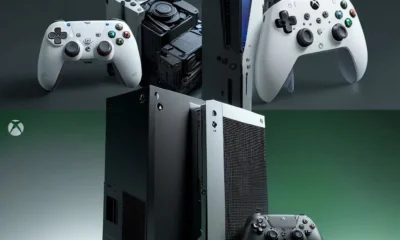
 Features1 week ago
Features1 week agoBest Cross-Platform Games for PC, PS5, Xbox, and Switch
-

 Game Reviews3 weeks ago
Game Reviews3 weeks agoHow Overcooked! 2 Made Ruining Friendships Fun
-

 Features2 weeks ago
Features2 weeks ago8 Video Games That Gradually Get Harder
-

 Game Reviews3 weeks ago
Game Reviews3 weeks agoHow Persona 5 Royal Critiques the Cult of Success
-
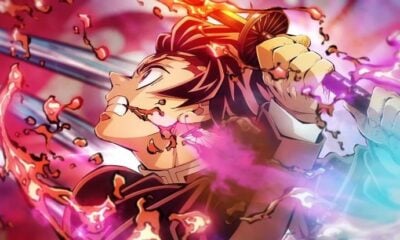
 Features1 week ago
Features1 week agoThe End Is Near! Demon Slayer’s Final Arc Trailer Hints at a Battle of Legends
-
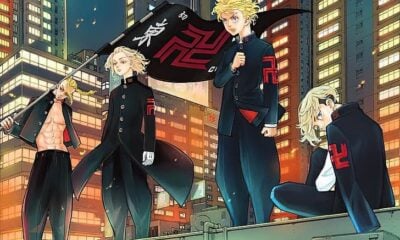
 Features2 weeks ago
Features2 weeks agoDon’t Miss This: Tokyo Revengers’ ‘Three Titans’ Arc Is What Fans Have Waited For!
-
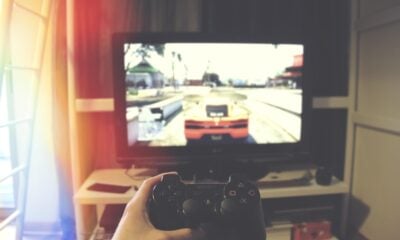
 Guides2 weeks ago
Guides2 weeks agoHow to buy games on Steam without a credit card
-
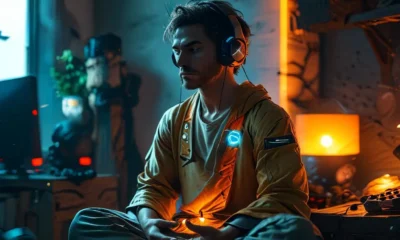
 Uncategorized2 weeks ago
Uncategorized2 weeks agoSleep Meditation Music: The Key to Unwinding
-
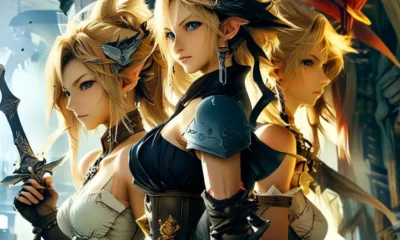
 Game Reviews1 week ago
Game Reviews1 week agoFinal Fantasy VII Rebirth Review: A Worthy Successor?























